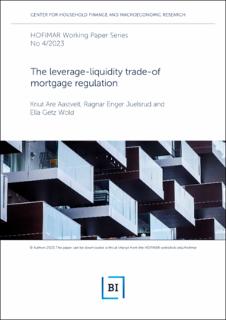| dc.description.abstract | We evaluate the impact of loan-to-value restrictions on household financial vulnerability. Using Norwegian tax data, we first document a beneficial leverage effect, in which households respond to the regulation by reducing house purchase probabilities, debt and interest expenses. Second, we document a detrimental and persistent liquidity effect working through higher downpayment requirements. We further show that households which, due to the regulation, hold less liquid assets also have larger consumption falls upon unemployment. Finally, we provide back of the envelope calculations on the net impact of lower leverage and lower liquidity on household consumption volatility. We find that the beneficial impact of lower leverage is outweighed by the detrimental impact of lower liquidity, suggesting that LTV restrictions are not successful in reducing consumption volatility at the household level. | en_US |
